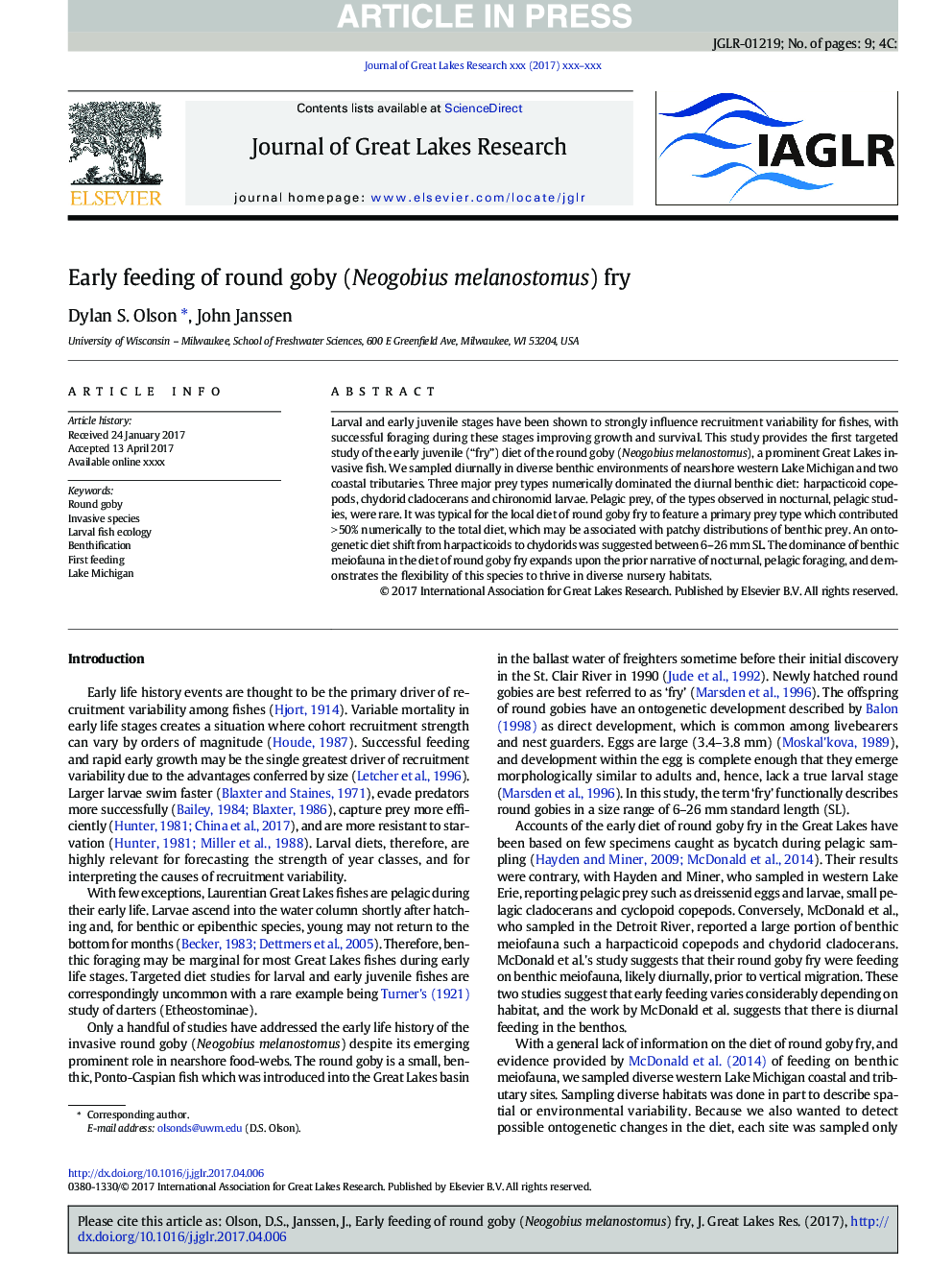| Article ID | Journal | Published Year | Pages | File Type |
|---|---|---|---|---|
| 5744650 | Journal of Great Lakes Research | 2017 | 9 Pages |
Abstract
Larval and early juvenile stages have been shown to strongly influence recruitment variability for fishes, with successful foraging during these stages improving growth and survival. This study provides the first targeted study of the early juvenile (“fry”) diet of the round goby (Neogobius melanostomus), a prominent Great Lakes invasive fish. We sampled diurnally in diverse benthic environments of nearshore western Lake Michigan and two coastal tributaries. Three major prey types numerically dominated the diurnal benthic diet: harpacticoid copepods, chydorid cladocerans and chironomid larvae. Pelagic prey, of the types observed in nocturnal, pelagic studies, were rare. It was typical for the local diet of round goby fry to feature a primary prey type which contributed >Â 50% numerically to the total diet, which may be associated with patchy distributions of benthic prey. An ontogenetic diet shift from harpacticoids to chydorids was suggested between 6-26Â mm SL. The dominance of benthic meiofauna in the diet of round goby fry expands upon the prior narrative of nocturnal, pelagic foraging, and demonstrates the flexibility of this species to thrive in diverse nursery habitats.
Related Topics
Physical Sciences and Engineering
Earth and Planetary Sciences
Earth and Planetary Sciences (General)
Authors
Dylan S. Olson, John Janssen,
